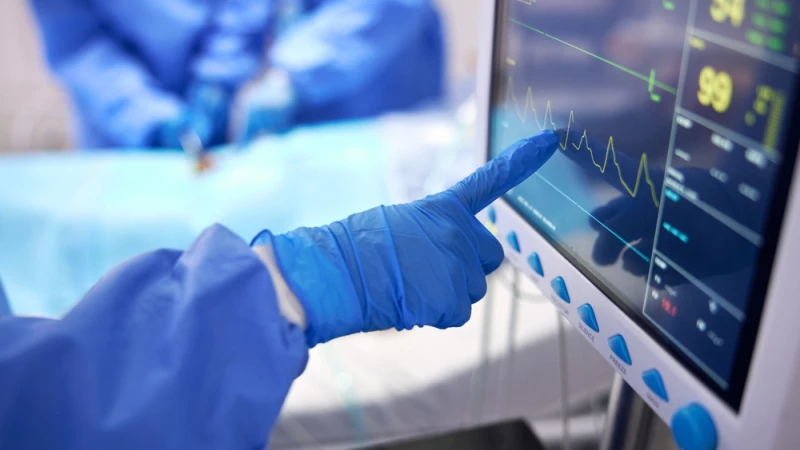Many complex economic, environmental, and geopolitical conditions have motivated pharmaceutical and biotechnology companies to accelerate digital transformation, from automation to IT/OT connectivity, and perhaps most importantly cyber-physical systems (CPS). In order to stay ahead of rising competition, manage supply chain constraints, and prioritize production and business continuity, these companies are incorporating complex technologies in manufacturing.
Securing all of these interconnected devices requires more advanced cybersecurity than ever before to adequately protect this unique and complex environment. Explore the greatest cybersecurity challenges that digital transformation presents and dive into the most important criteria pharma and biotech companies should consider when evaluating how to best protect their assets.
Challenges of Securing OT in Pharma and Biotech
Digital transformation has enhanced the efficiency and advancement of pharma and biotech companies, from expediting vaccine production and distribution, processing tanks, advanced sensors built to deliver real-time data across storage silos, to robotic CIP and container handling systems. It’s clear that these technological advancements brought about by automations, IT/OT connectivity, and the power of cyber-physical systems (CPS) have delivered unparalleled manufacturing and business benefits. But with increased connectivity comes greater challenges to secure these various systems.
Manufacturing operations running on a complex patchwork of legacy OT equipment interlaced with modern, internet-connected devices and CPS face a growing attack surface. When these vulnerabilities are exploited, pharmaceutical companies expose business-critical operations to cyber threats that can have significant consequences to business continuity, the quality of products, and the health and safety of workers. Only with a comprehensive CPS protection platform can pharma & biotech companies insure themselves against potentially devastating cyber attacks through proactive exposure management, threat detection, and risk management measures.
Top Considerations in Evaluating CPS Security Solutions
Not every CPS security solution is built the same or offers the same amount of protection. But outside of the basic principles of the solution are other considerations that must be taken into account.
Scalability
Selecting a CPS protection platform that is able to grow with your company’s current and future demands is crucial. From being able to discover and manage the inventory of all your assets to eliminating the need to maintain multiple-point products, consider whether a solution is built to handle your business’s specific requirements. One unified CPS-specific platform eliminates the need for several products cobbled together to deliver comprehensive protection. Products that offer flexibility and ease-of-use regardless of your network size, architecture, or diversity of end users will massively simplify and streamline adoption and usage.
Regulatory Compliance
In the wake of disruptive and dangerous cybersecurity incidents that have affected pharmaceutical companies in recent years – including WannaCry, NotPetya, and Novartis – have led government agencies to tightened recommendations and regulations that mandate certain precautions and action to secure OT. Selecting a solution that complies with the requirements by your government’s cybersecurity regulatory bodies, whether that’s FSMA, NIS 2.0, RCE, SOCI/SLACIP, FDA cGMPs, or any other is critical.
Meets Recommended Standards
Outside of government regulations, it’s also prudent to select a protection platform that complies with recommended best practices and standards to ensure your cybersecurity strategy is in lock step with industry guidelines. The standards to look out for in choosing an OT cyber solution include CISA CGPs, NIST CSF, ISO 27001, CIS, NIPP, U.S. Bioeconomy Executive Order depending on the location your company is based in.
4 Key Steps for Securing OT in Pharma & Biotech
The four critical principles of securing OT in pharma and biotech are non-negotiables when considering the right solution. In an environment with such complex operational needs, knowing that your solution is able to handle each and every one of these areas will help reduce your attack surface and fortify your security posture.
Asset Discovery and Inventory Management
The foundation of CPS cybersecurity is knowing exactly which assets must be secured. This is why the first key step is developing a comprehensive asset inventory. By leveraging the deepest portfolio of CPS protocol coverage to provide a highly detailed inventory of all assets, a leading OT cybersecurity solution can ensure no assets are unaccounted for.
Deep asset visibility leverages data collection through several different types of discovery methods from passive monitoring to safe active queries that target assets in their native protocol. Utilizing several different flexible methods of discovery ensures that all assets are discovered and all necessary information is accounted for to create comprehensive asset profiles. Additionally, asset visibility must take into account your organization’s unique architectural complexities. This includes aspects like geography, environmental factors, and network topology.
Exposure Management
Given the evolving risk landscape in industrial industries and the unique nature of their environments, organizations need to transition from traditional vulnerability management to a more dynamic and targeted approach to mitigating overall risk exposure. A CPS protection platform must be tailored to meet the operational demands and intricate challenges of these settings, enabling organizations to effectively identify, evaluate, and prioritize risks across their CPS. In meticulously profiling assets to reveal their risk exposure, including vulnerabilities, misconfigurations, and weak/default passwords it’s possible to proactively identify vulnerabilities and expose risks.
Remediation is also key to this step. Streamlining remediation efforts can reduce the complexity of managing exposures by identifying key attack paths according to their potential impact and exploitation probability. Take advantage of actionable insights to help prioritize remediation based on measurable outcomes. Detailed KPIs and adaptable reporting can facilitate workflow coordination among all asset owners—like engineering, security, and facilities management—to assess cyber risk posture, guide decision-making, and monitor progress.
Network Protection
Applying network protection principles to your environment can simplify the process of monitoring, refining, and enforcing communication policies through existing security infrastructure. These policies include segmentation, Zero Trust practices, and analyzing network traffic and device communications are core to improving your industrial cybersecurity posture.
Threat Detection
Quickly detecting known and unknown threats is critical for protecting your assets and network at large. The ability to separate legitimate traffic from anomalous communications can help you identify threat signatures, weed out false positives, and alert to any known, unknown, or emerging threats swiftly.
Protecting Pharma & Biotech with Claroty
With seven of the world’s largest ten pharma and biotech companies using Claroty to secure their CPS, Claroty’s ability to provide comprehensive protection to these industries has been proven time and time again.
Claroty recognizes that securing the OT environments that underpin pharmaceutical manufacturing can be a complex endeavor. For this reason, Claroty streamlines and optimizes this cybersecurity journey by:
Gaining visibility into all CPS in OT: Ensuring security in OT systems is fundamentally tied to achieving comprehensive visibility. Therefore, pharmaceutical companies must maintain a complete inventory of OT, IoT, BMS assets, and other CPS across all their facilities. Claroty is committed to providing our pharmaceutical clients with unparalleled visibility to protect the OT environments essential for their critical business operations.
Integrating IT Tools with OT: Pharmaceutical manufacturing CPS often operate on proprietary protocols and legacy systems, making them incompatible with standard IT solutions. However, these IT solutions can still play a role in OT environments. Claroty offers integration with existing technologies, allowing customers to seamlessly extend their IT tools and workflows into OT settings without expanding their existing tech stack.
Extending IT controls to OT: In the pharmaceutical sector, OT environments often suffer from a lack of critical security controls and consistent governance, unlike their IT counterparts. Claroty addresses this by first providing comprehensive visibility into all CPS, and then integrating IT tools and workflows with OT. This allows for the extension of existing IT controls into OT, thereby unifying security governance and enhancing resilience across both IT and OT domains.
Claroty’s industrial cybersecurity solutions are specifically designed to meet the distinct security and operational requirements of the pharmaceutical and biotechnology industries. With strategic advice from Claroty’s experts, pharmaceutical manufacturers can secure their OT systems while also enhancing business value throughout their industrial cybersecurity initiatives.
To learn more about Claroty’s purpose-built solutions, speak to a member of our team.













